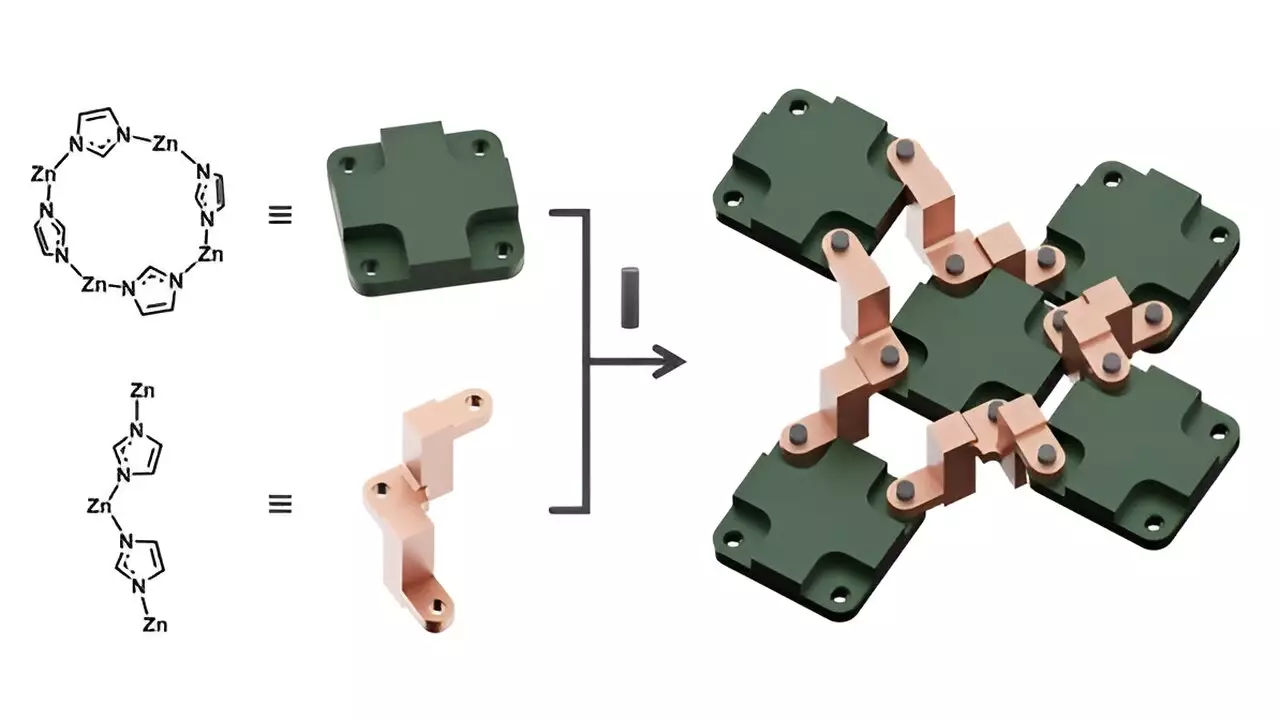In a captivating stride towards the future of nanotechnology, researchers at the Ulsan National Institute of Science and Technology (UNIST) have unveiled an extraordinary development in the realm of molecular-scale devices. Spearheaded by Professor Wonyoung Choe and his dedicated team, this research delves deep into zeolitic imidazolate frameworks (ZIFs), which are designed to replicate the intricate behaviors of machines at a remarkably small scale. This groundbreaking achievement not only challenges the status quo of solid-state molecular structures but also unlocks vast potential for advancements in data storage and other pivotal applications.
The Daring Challenge of Mechanical Control
Historically, controlling mechanical interactions within solid-state molecular architectures has posed significant challenges. Most metal-organic frameworks (MOFs) have not inherently demonstrated machine-like behavior, making it difficult to link such functions with mechanical properties. However, the UNIST team has daringly bridged this gap by ingeniously integrating dynamic molecular machines into established MOF structures. This creative approach allows for enhanced mechanical control and facilitates a robust exploration of nanotechnology’s possibilities.
Engineering Precision: Mechanisms in Action
The team’s meticulous design revolves around leveraging the existing structures of MOFs, where they embedded multiple dynamic components as pillared ligands. This innovative configuration not only maintains the rotational functions of the embedded machinery but also ensures these movements occur within a solid state. Utilizing single-crystal X-ray diffraction, they painstakingly confirmed that the mechanical linkage structure of the ZIF mimics that of a slider-crank linkage, enabling translational motion based on external stimuli like temperature variations and solvent interactions.
The significance of this work cannot be overstated. By orchestrating how different mechanical components interact within a molecular setting, the team has illustrated a model for achieving controlled nanoscale movements — a feat that stands to revolutionize how data is handled at microscopic levels.
A Leap Forward in Mechanical Properties
One of the most striking outcomes of this research is the extraordinary elasticity and flexibility exhibited by the new ZIF. This characteristic positions it as an optimal candidate for applications that require sophisticated mechanical behavior, such as in data storage technologies. The researchers’ findings suggest that the inherent connection methods between the metal nodes and organic ligands are critical in determining the flexibility of these frameworks. Such variations in linkage designs could enable tailored assembly processes, thus enhancing the ability to create machines capable of specific and complex movements.
Professor Choe aptly articulated the potential implications of their work, suggesting that the advent of molecular machines acting in tandem with advanced mechanical properties could unveil a wealth of new materials previously thought impossible. The possible applications are expansive, hinting at a future where we can engineer materials that not only store information more efficiently but also adapt and respond dynamically to their environments.
Redefining Nanotechnology
As the boundaries of nanotechnology continue to stretch, the strides made at UNIST signify more than just a scientific achievement; they represent a paradigm shift in how we understand and manipulate molecular interactions. By harnessing the intrinsic properties of ZIFs and optimizing their mechanical functionalities, we stand on the brink of an era where molecular machines may not only advance data storage capabilities but also catalyze innovations across a multitude of other fields. The implications of this research are profound, suggesting that we are merely scratching the surface of what is possible within the world of nanotechnology.

